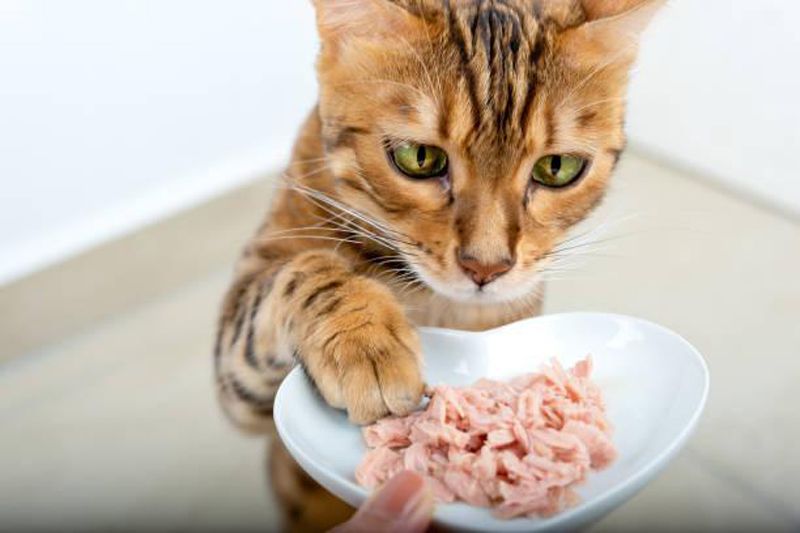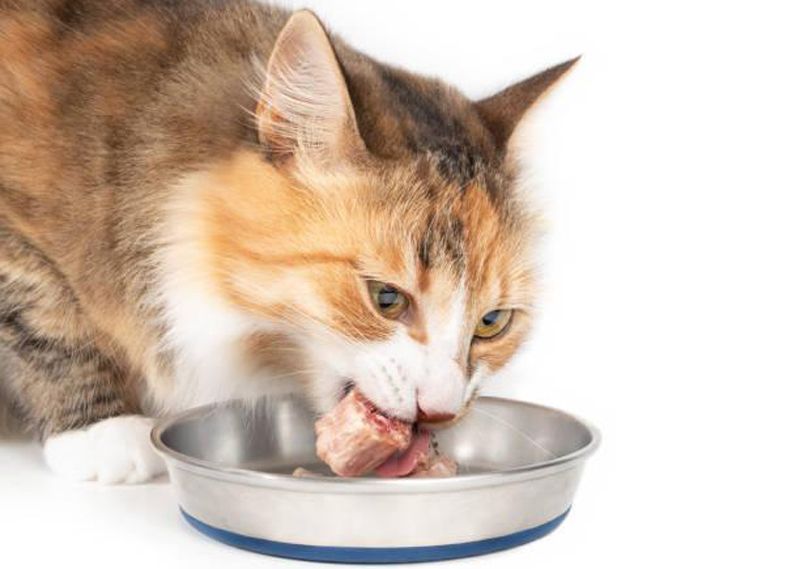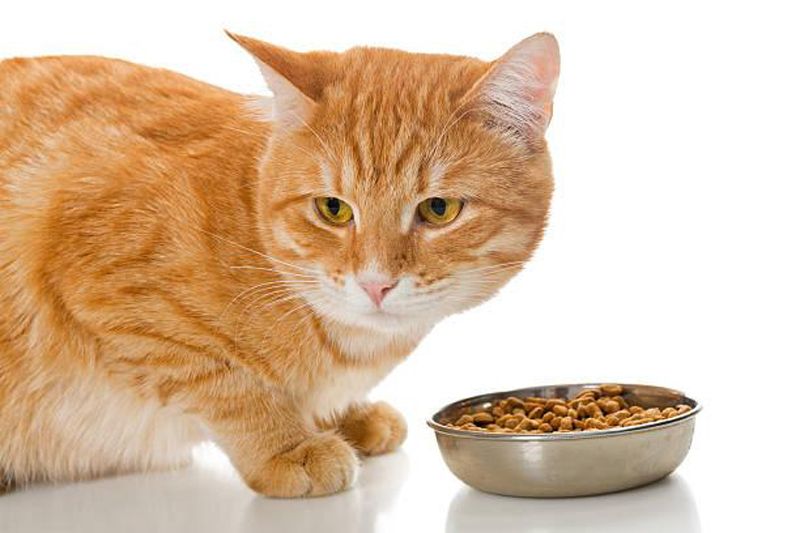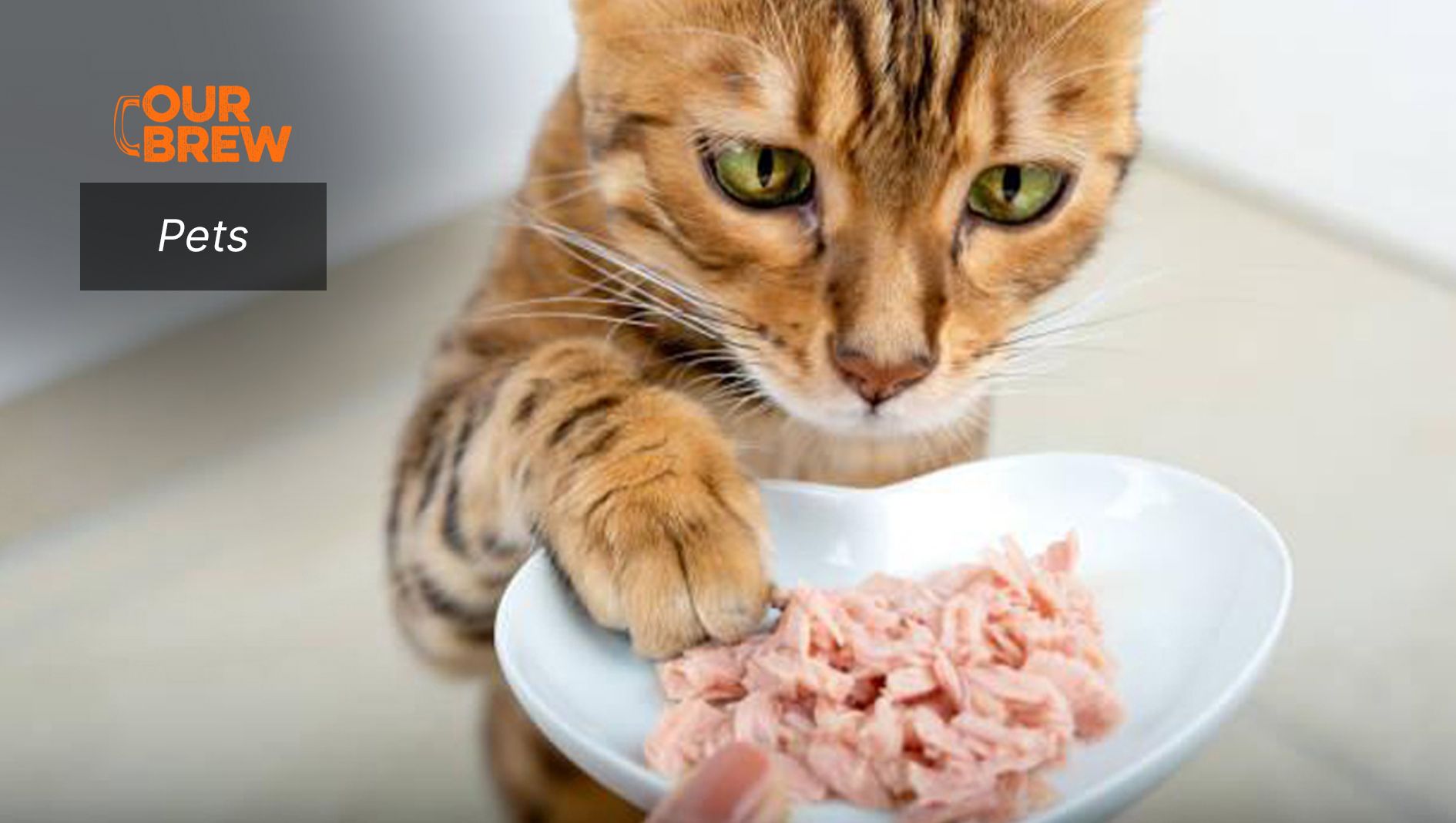by Mariana Burgos
The welfare of a cat is impacted in various ways when it is kept indoors since it is dependent on its humans to decide when, what, and how much to eat. Cats kept as pets sometimes have weight issues and behavioral issues, and while these issues are multifaceted, they may be connected to the manner in which these cats are eating.
Unowned cats, stray cats, and cats in the wild have different situations. Since they can adapt to a variety of prey, feral cats are generalist predators that probably can survive in a variety of habitats. The resources that are accessible have a significant impact on how feral cats naturally feed. Unowned stray cats that were not supplemented by people mainly hunted and consumed small rodents and birds, though fish, insects, reptiles and amphibians were also eaten.

Cats, owned and unowned maybe, have a commonality—predatory behavior. Predatory behavior is not entirely eliminated by the human provision. One study by Cole C. Hawkins, William E. Grant and Michael T. Longnecker in their paper, “Effect of house cats, being fed in parks, on California birds and rodents” (https://cals.arizona.edu/pubs/adjunct/snr0704/snr07042l.pdf)says, they discovered that in a national park, native rodent and bird populations were considerably lower in regions where cat colonies were fed compared to areas where cats were not seen.
Cat Diet
From what I have observed with my own cats, they require a diet strong in fat and protein. They also need other crucial nutrients. They often consume a number of little meals during the course of the day, so they can easily follow a free-choice feeding plan to maintain their regular body weight.
According to the article, “Feeding Your Cat” of the Cornell Feline Health Center of the College of Veterinary Medicine of the Cornell University website (https://www.vet.cornell.edu/departments-centers-and-institutes/cornell-feline-health-center/health-information/feline-health-topics/feeding-your-cat), as obligate carnivores, cats only consume food that contain animal products as a source of nutrition. Since they evolved as hunters who consumed prey that contains a high amount of protein, a moderate level of fat, and a low amount of carbohydrates, they still need to eat prey that has these broad proportions in their diet even to this day.
As we previously stated, even with human provision, its predatory behavior is never eliminated.
Additional nutrients that cats need include vitamins, minerals, fatty acids, and amino acids.
What available purchasable food can pet cats eat?
In order to provide your cat with the ideal ratio of nutrients and calories, commercially prepared cat meals have been designed. The Cornell Feline Health Center says that the Feline Nutrition Expert (FNE) Subcommittee of the Association of American Feed Control Officials (AAFCO) has determined the fundamental minimum nutritional requirements for cats, and producers apply these guidelines when creating cat feeds.
The Cornell Feline Health Center says that there are three types of commercial cat food. These food are formulated as dry, semi-moist, and canned. The amount of water, amount of protein, caloric density, palatability, and digestibility of these goods vary.

Due to its low cost and ability to be fed “free choice,” dry cat food is a convenient option for owners. However, a cat may prefer moist or semi-moist food more than dry food, and depending on the type and quality of the ingredients, dry food may also be less digestible as the Cornell Feline Health Center claims.
Semi-moist food, which contains about 35 per cent moisture, mostly consists of meat and meat byproducts as its main constituents. The finished item also contains preservatives and other ingredients including soybean meal, cereals, grain byproducts, and so on. Food that is only slightly wet typically has a moderate price. The Cornell Feline Health Center says that some cats may prefer semi-moist food to dry cat food, and they might be given the option to choose their own meal.
The third type of available commercial food for cats is canned cat food. Since canned cat food contains at least 75 per cent moisture, it is a good dietary supply of water as the Cornell Feline Health Center says. Even though it is typically the priciest kind of cat food, most cats find it to be quite appetizing. There are many different options available, which is beneficial if your cat is a picky eater. Unopened cans of food have the most extended shelf lives. However, opened cans of cat food should be refrigerated if any of it is left over in order to preserve quality and stop deterioration.
Homemade cat food: Is it better?
Because the recipe might not contain the proper amounts and ratios of nutrients for your cat, making your cat food is challenging and time-consuming. Unless a doctor advises a home-formulated recipe for medical reasons, the Cornell Feline Health Center says it is typically advised that cat owners purchase nutritionally balanced commercial cat diets. In that case, your doctor is likely to suggest a recipe created by veterinarians who have obtained certification in animal nutrition.
If cats are to thrive, they need a balanced diet. Serious health issues can result from nutrient surpluses and deficits.
Additionally, a lot of homemade cat food recipes, according to Jennifer Coates, DVM, in her article “Is Homemade Cat Food Better?” contain either too little or too much of one or more essential nutrients (11 February 2021). Coates says, 114 recipes for home-prepared maintenance diets (HPMD) for cats that were gathered from books and online sources were analyzed in a study that was published in 2019. All of the examined HPMD recipes had issues with nutritional adequacy, according to the authors.
But Coates claims homemade diets might just work if you get your recipes from a veterinary nutritionist with board certification.

These experts can create recipes that consider the age, weight, and health issues of your cat, according to Coates. She says you can seek out a veterinary nutritionist through your primary care physician.
Editor’s Note: We have found that with both cats and dogs, a combination of commercial (dry and wet food) and homemade food is best. Just recently, a complete bloodwork of our senior cat Angel and 12-year-old rescued dog Georgy showed their liver, kidneys and other values to be in good condition. We attribute that mainly to the food we give to them.
About the Author: Mariana Burgos is a freelance artist. She is a solo parent for 15 years now because she is the wife of a desaparecido. She and her daughter are animal lovers and are active in advocating not only human rights but the rights of animals as well.
This article also appears in the Manila Standard
If you liked what you just read and want more of Our Brew, subscribe to get notified. Just enter your email below.


Related Posts
Understanding Pets With Special Needs
Mar 03, 2025
Can Cats Eat Basil Leaves?
Feb 20, 2025
The Right Way to Pick Up, Hold, and Carry Your Dog
Feb 17, 2025